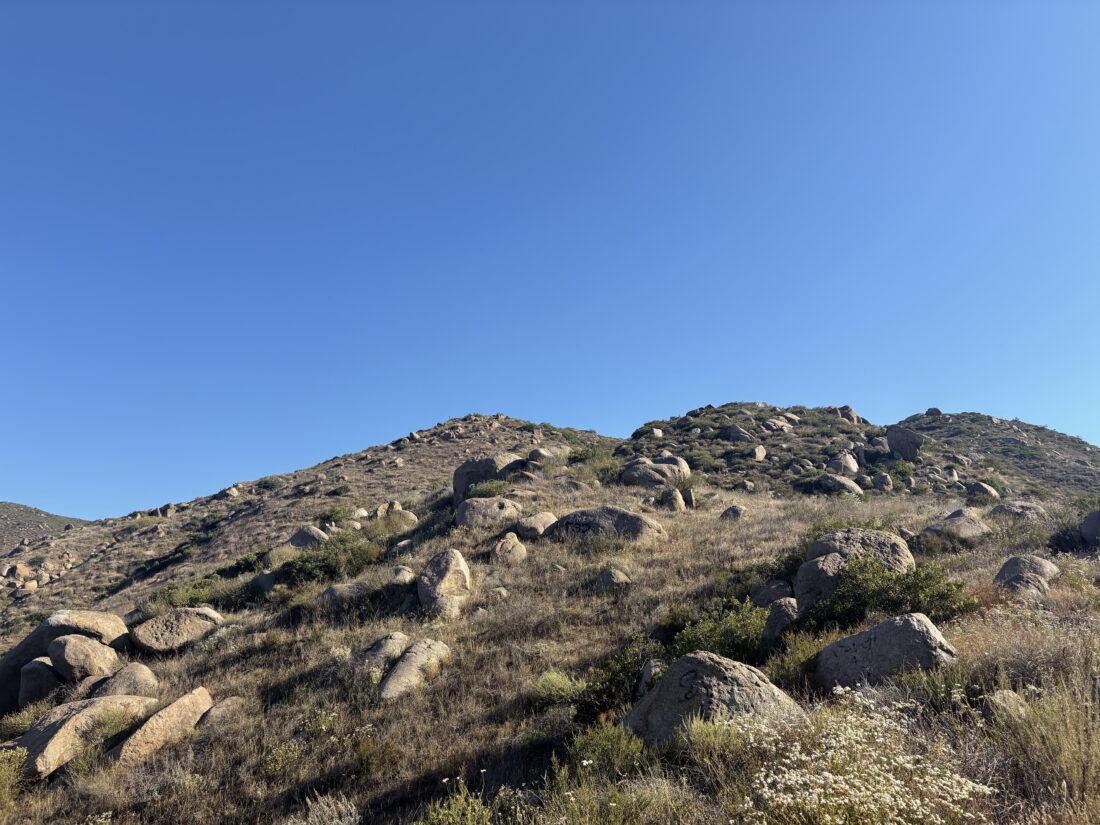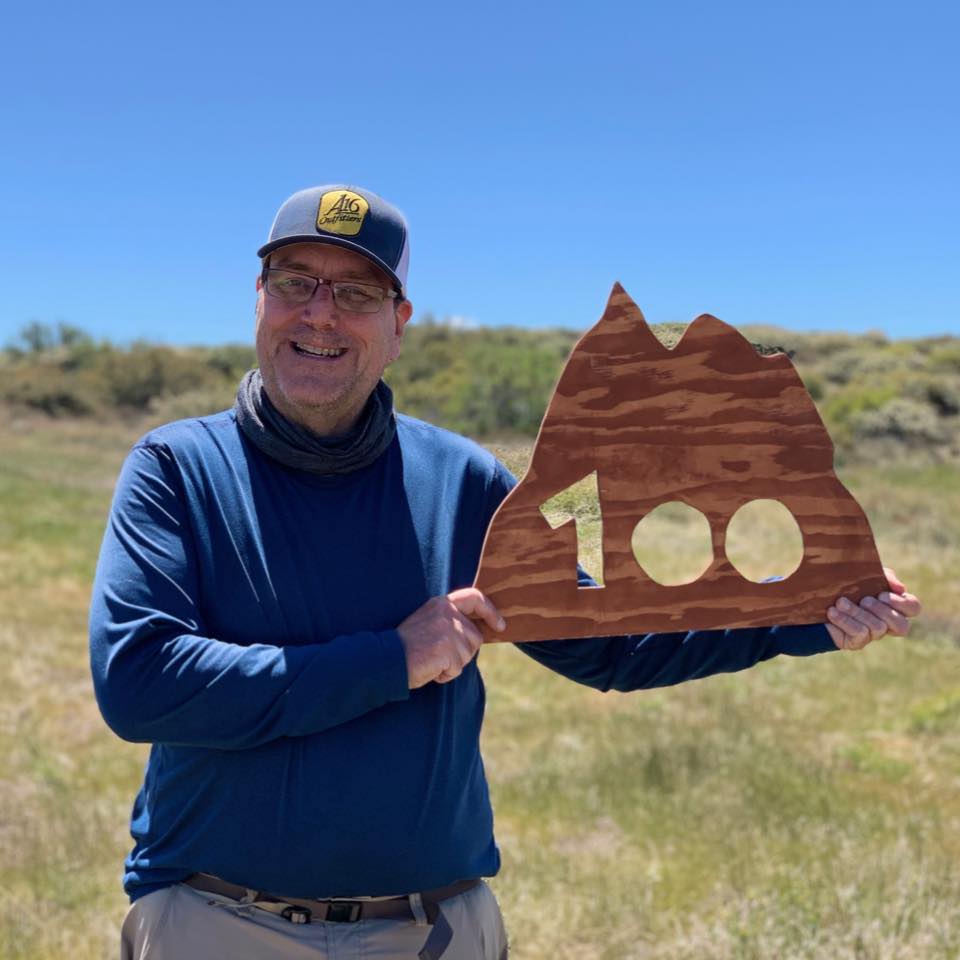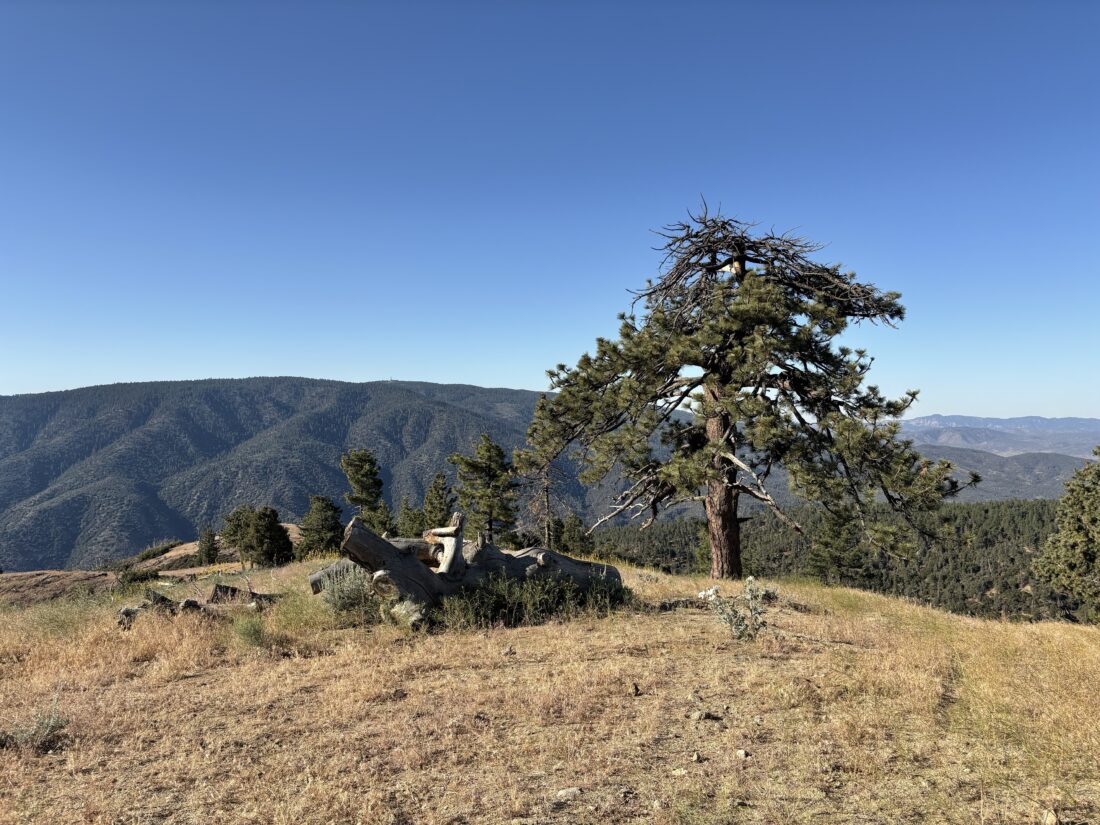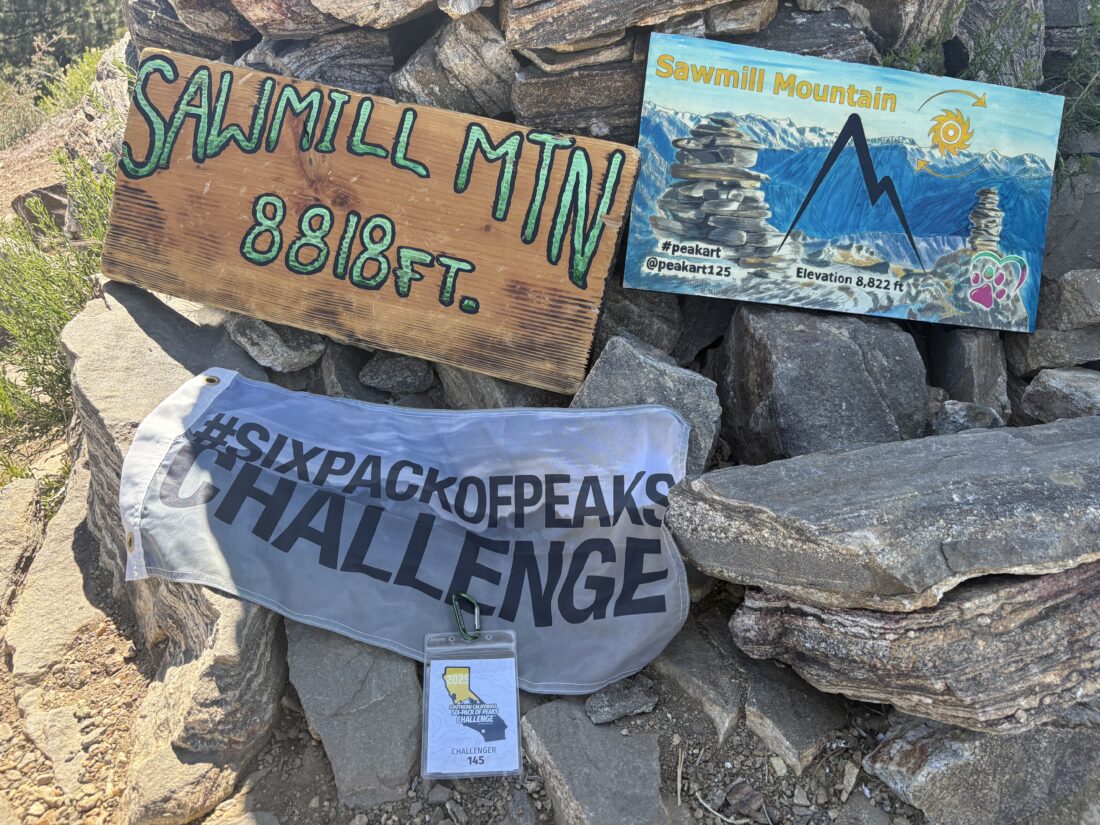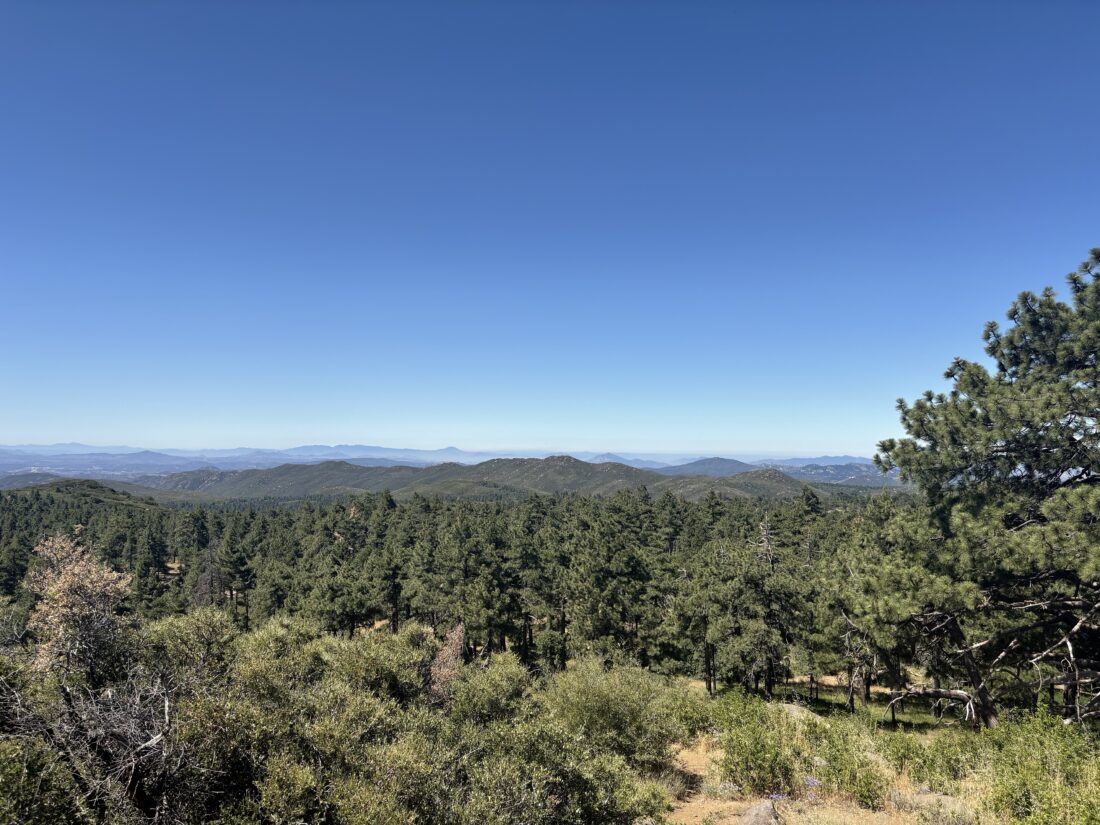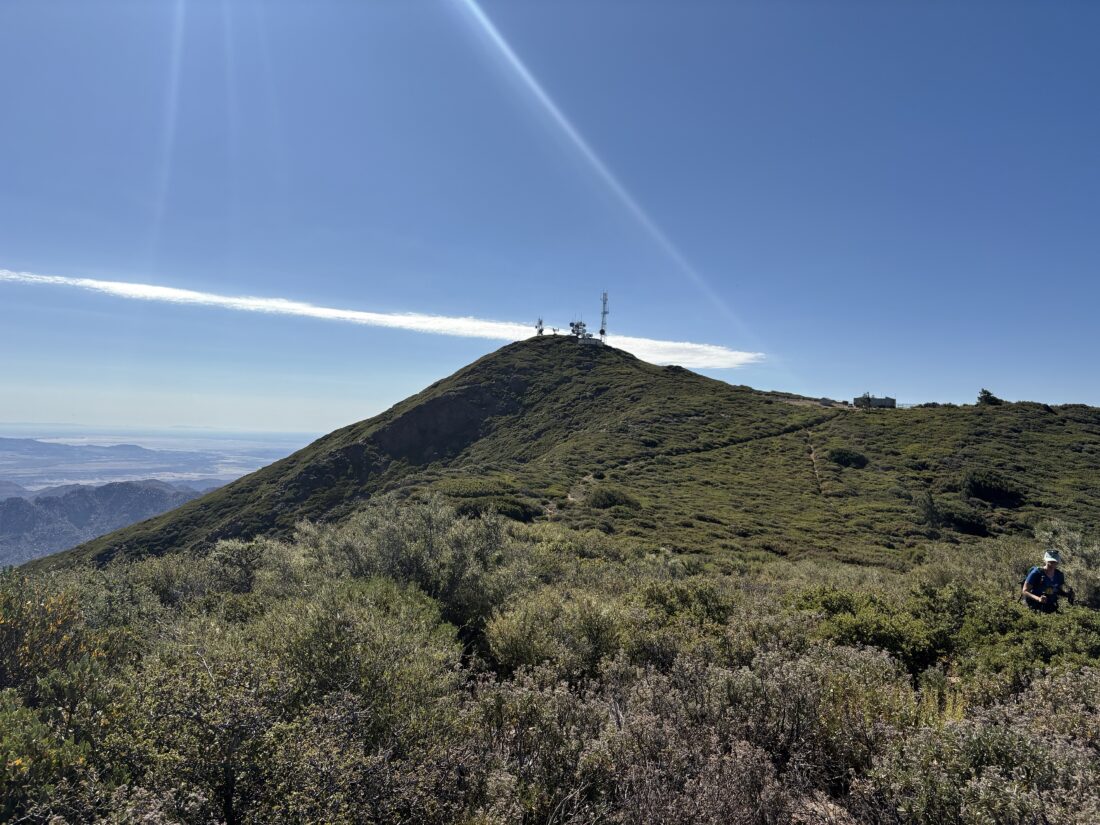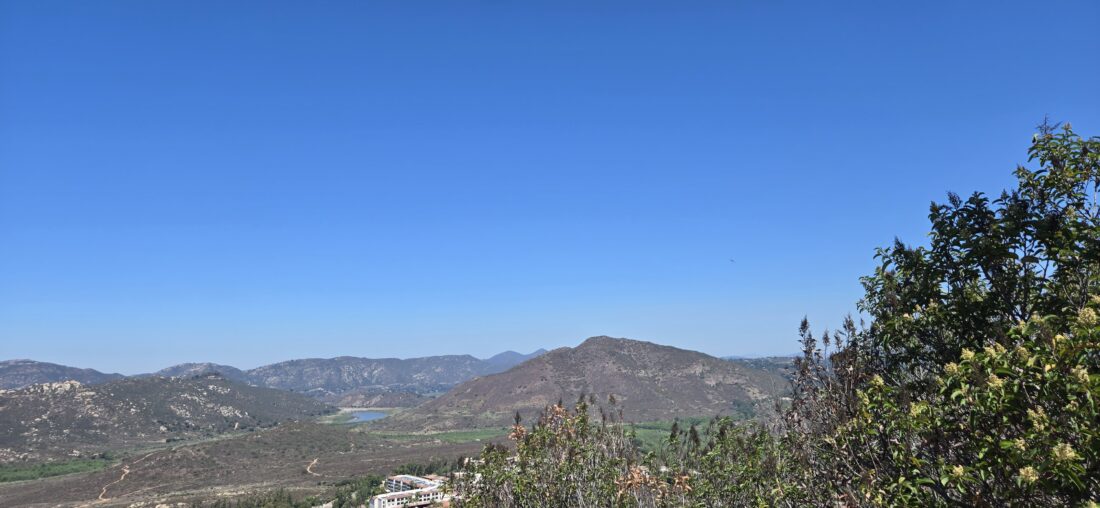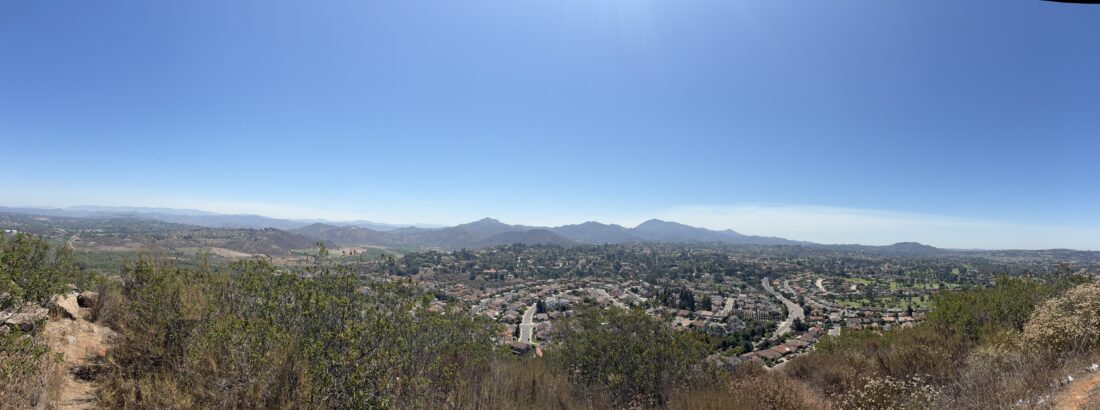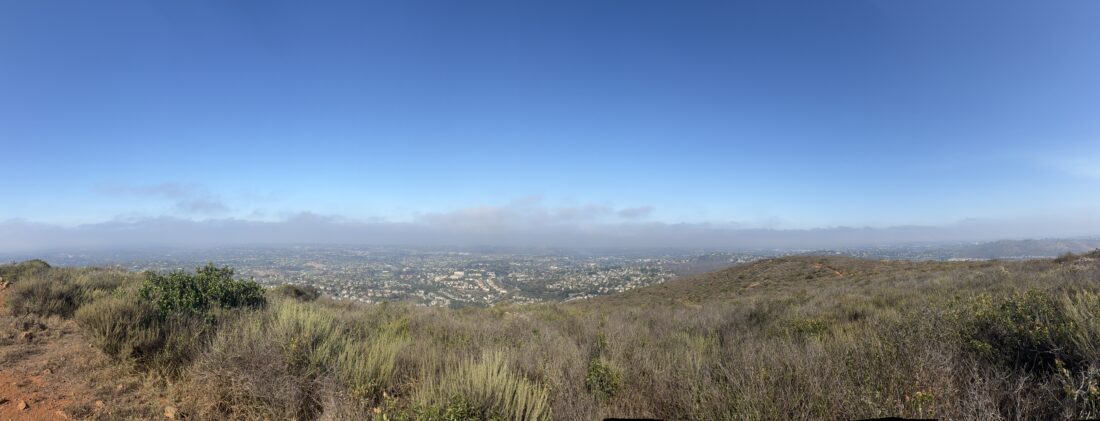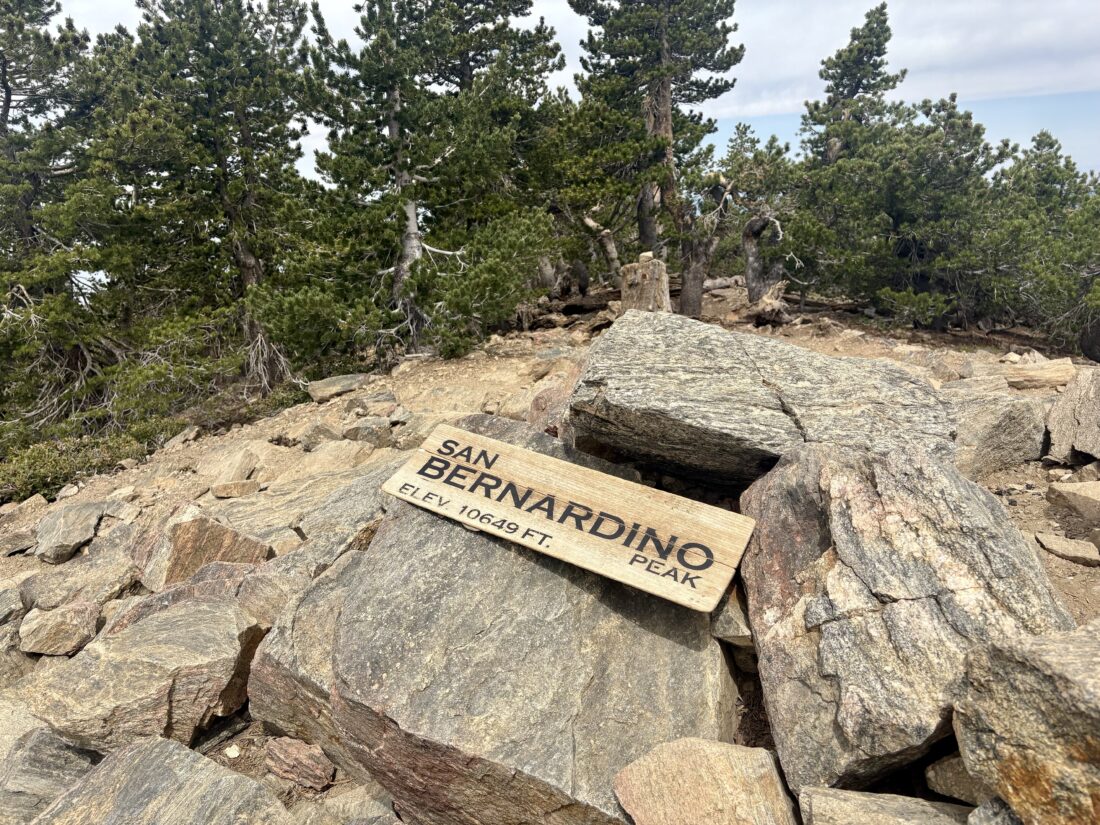Both Ted and I are researching new packs for our upcoming hike of Mt. Whitney. We are both trying to find something with enough room for the food and gear we will need, but that is light and comfortable for the 22 miles that the packs will be sitting on our backs. I have one option, my Osprey Daylite Plus, but I am also going to try the Osprey Hikelite 26 Pack. While I have used the Daylite Plus on some longer hikes, my back always seemed drenched. Ted is also working through various pack options, and wanted to try my Osprey Stratos 36, which I typically use. Initially, I thought about hiking one of the hikes on the 2025-2026 Coast to Crest Challenge, but none of them seemed like a good test of the pack for Ted. So, I instead picked one of the 100 Peak Challenge hikes that Ted still needs to do, Clevenger Canyon North. We made the short drive out to the parking area and gathered our gear. The marine layer still hung above us, making the day a bit humid as we set off down toward the creek. We noted the rocks were covered in graffiti. Once at the creek, which was lightly flowing, we began the climb in earnest.


















Sadly, the graffiti continued on the trail. I only hope that those who did this got a nice case of poison oak. We kept climbing the south face of the peak, and the sun was slowly burning through. There is no shade on this hike, so I recommend either starting early or waiting for the cooler months to do it. I checked in on Ted of how the pack felt, and he said it was pretty good. After a bit of climbing and seeing even more graffiti, we reached the turn-off to the Clevenger Canyon North Viewpoint. We followed a small spur trail to the viewpoint, where the famous chairs could be seen across the canyon. After scrambling down from the rocks, we set off to also climb Peak 1820, which sits just to the north of the viewpoint. I pulled up a previous track and set off through the low brush. After weaving our way through, we reached the summit. After a few more photos, we headed back down the trail. The descent went quickly, and we pushed back up to the parking area. Ted now has 20 peaks left for the 100 Peak Challenge. I logged this trek at 4.9 miles in 2:29, with 1461 feet of gain. As to whether Ted is going to use that pack on Whitney, not sure yet…
I am an avid peak bagger, sometimes backpacker, and former sea kayaker living in San Diego. I am the co-author of Urban Trails: San Diego, coming in Spring 2026!
In 2019, I became the third person to complete the San Diego 100 Peak Challenge. Not stopping with that accomplishment, I set my sights on the harder San Diego Sierra Club 100 Peak list, which I completed in 2021. In addition, I have conquered several Six-Pack of Peaks challenges (SoCal, San Diego, Central Coast, and both the Arizona-Winter and Arizona-Summer). I am looking forward to exploring new summits and new adventures across the southwest.
